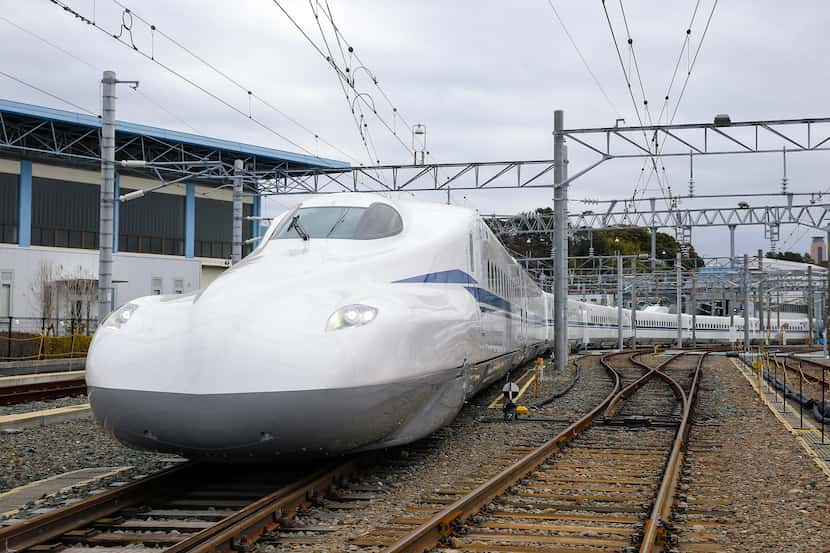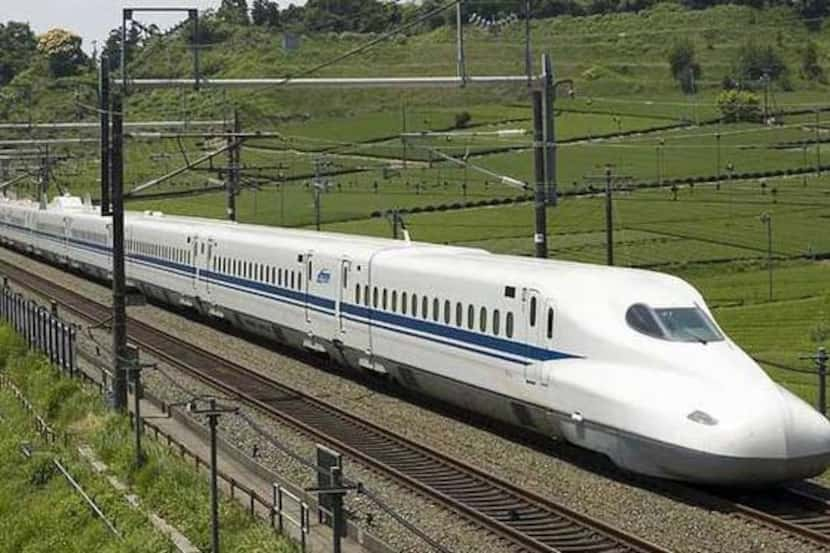Someday you could hop a bullet train in downtown Dallas and arrive in Houston in fewer than 90 minutes.
The trip would save North Texans time. But beyond the four hours of drive time or a trip to the airport, it also could be the cleanest and safest way to travel between the two cities, according to Texas Central, the company behind the Texas High-Speed Train. And the project could be just a year away from breaking ground.
North Texans have been talking about a bullet train between Dallas and Houston for years. And while it’s getting closer to reality, some opposition and a few federal hurdles stand in the way of the corridor’s construction.
“We’ve had our heads down working on this for a long time,” said Holly Reed, Texas Central’s managing director of external affairs. “The conversation has shifted from, ‘Is this really going to happen?’ to ‘When can I ride it?’”
The high-speed train will have a number of impacts on the state, from economy to education, and Texas Central says it wants to ensure it has only positive effects on Texas’ environment.

Good for the environment?
Minimizing the permanent impacts of a train that will cross more than 200 miles of land is no easy task, but Texas could be the perfect place for it.
“We’re in that rare air where it’s good for Texas, it’s good for business, and it’s good for the environment,” Reed said.
The distance between Dallas and Houston is what Reed called a “sweet spot that is too far to drive and too short to fly,” and the area between the cities is also mostly flat, with no significant bodies of water in the way.

“Now that you have these two dots on the map, how do you connect them?” Reed said, voicing the question that Texas Central has been working to solve.
The Texas High-Speed Train will mostly run above ground, and 52% of its tracks will be laid next to existing infrastructure. Four corridors with several route options were studied before Texas Central selected one that it determined would have the least impact on wetlands and existing business, and cross the fewest parcels of land.
But Texas Central says it wants to do more than minimize any negative impacts: It wants to improve Texas’ environment.
“This will be the way to go back and forth that is the cleanest alternative,” Reed said.

Currently, about 16 million trips are made annually between Dallas and Houston, and about 90% are made by vehicle, said Rebecca Cowle, a director of external affairs for Texas Central. That number, she said, is expected to increase more than 200% by 2035.
A study by the International Union of Railways on high-speed rail systems in France and China found that the carbon footprint of the rail system can be “up to 14 times less carbon intensive than car travel and up to 15 times less than aviation travel.”
Once the train is operating, it could help remove over 14,000 vehicles per day on Interstate 45 between Dallas and Houston, and that decrease could save 81.5 million gallons of gas and help reduce emissions, Cowle said.
“Being able to improve air quality by removing cars off the road will further improve the environment impact,” she said. “From an air-quality perspective, it’s a very powerful tool.”
Despite the benefits of the project, it also faces opposition. Some of the strongest resistance comes from Texans Against High-Speed Rail, an organization made up for Texas residents, private property owners, business owners and elected officials. The group has more than 19,000 followers on Facebook.
Patrick McShan, a Dallas attorney with The Beckham Group, represents Texans Against High-Speed Rail, which opposes the construction of the rail system in Texas.
“You would think I would be the type of person who wants this,” said McShan, an attorney who travels often for work, including trips from Dallas to Houston.
“I just think it’s a terrible idea,” he said. “I think it’s going to fail financially, and in the process, it’s going to tear up 240 miles of East Texas.”
McShan said he also has concerns for landowners who will be impacted or potentially displaced to make way for the train.
On its website, Texas Central says it is committed to “work with each landowner in a fair and personalized manner and we will take great care to accommodate wildlife and livestock movement within the project alignment.”
Climate adaptation
The train North Texans will ride is the latest model of the Shinkansen train, the N700S. In Japan, Shinkansen high-speed trains connect Tokyo to Osaka, a distance of about 300 miles.
The N700S train runs on a completely electric system, and has features to save energy. For example, the trains will have regenerative braking that recaptures energy and puts it back into the grid.

Previous models of Shinkansen trains have been used in Japan since the 1960s, but the N700S will be adapted for Texans’ needs and Texas’ climate. To do this, Texas Central has looked at state climate data, soil samples and simulations of how Texas weather could change in coming years. The train will also be modified to adapt to the difference in climate between Dallas and Houston.
Texas Central has brought on outside help for these adaptations, including talking to developers behind the Haramain High Speed Railway in Saudi Arabia, which connects Mecca and Medina. Temperatures in both cities resemble the summer heat in Texas — and can get even hotter.
“If they can figure it out in Saudi Arabia, they can figure it out in Texas,” Cowle said.

What’s next
Texas Central is waiting on federal approval regarding environmental and safety aspects of the project. If Texas Central can get those approvals by next summer, groundbreaking could begin next year.
After that, it could be as soon as 2026 when North Texans will be able to travel to Houston in under 90 minutes.
Once it’s up and running, the rail system figures to have a number of impacts on the state, from business to education to arts and entertainment.
Sports fans will be able to see an Astros, Rockets or Texans game and return to Dallas the same day. Theoretically, someone could live in Dallas and work in Houston, or vice versa.
With a stop in College Station, Texas A&M University could become a commuter school of sorts. Students living in Dallas or Houston could attend classes there without having to move.
The system would "transform how people think about travel,” Reed said.
High-speed rail also could hold the potential to change travel across the country. The train system would be the first of its kind in the U.S., and it could set the framework for more to come.
“People will view Texas differently,” Reed said. “We’re creating an industry as we’re creating this system.”
CLARIFICATION, 9:45 a.m. Dec. 15, 2019: This article has been updated to clarify that Patrick McShan is an attorney representing the group Texans Against High-Speed Rail.






